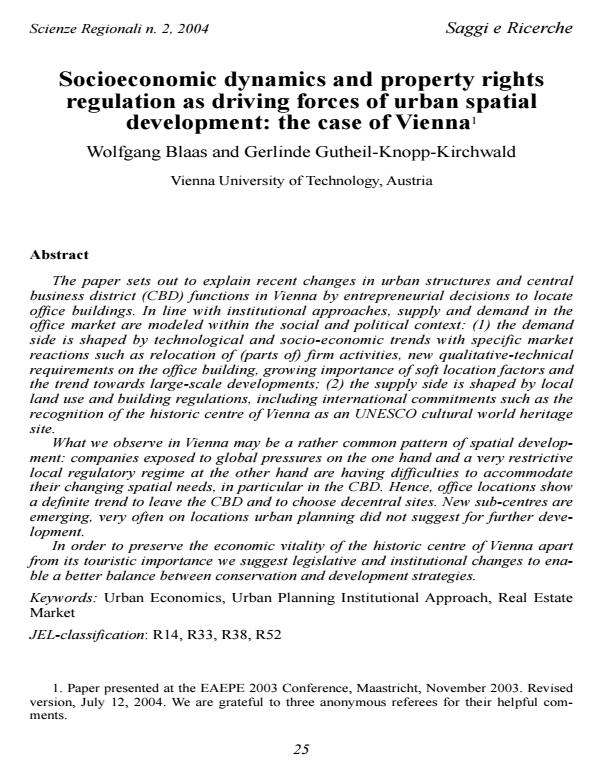Socioeconomic Dynamics and property rights regulations as driving forces of urban spatial development: the case of Vienna
Titolo Rivista SCIENZE REGIONALI
Autori/Curatori Wolfang Blaas, Gerlinde Gutheil-Knopp-Kirchwald
Anno di pubblicazione 1 Fascicolo 2004/2
Lingua Inglese Numero pagine 24 P. Dimensione file 139 KB
DOI
Il DOI è il codice a barre della proprietà intellettuale: per saperne di più
clicca qui
Qui sotto puoi vedere in anteprima la prima pagina di questo articolo.
Se questo articolo ti interessa, lo puoi acquistare (e scaricare in formato pdf) seguendo le facili indicazioni per acquistare il download credit. Acquista Download Credits per scaricare questo Articolo in formato PDF

FrancoAngeli è membro della Publishers International Linking Association, Inc (PILA)associazione indipendente e non profit per facilitare (attraverso i servizi tecnologici implementati da CrossRef.org) l’accesso degli studiosi ai contenuti digitali nelle pubblicazioni professionali e scientifiche
Socioeconomic dynamics and property rights regulation as driving forces of urban spatial development: the case of Vienna (di Wolfgang Blaas and Gerlinde Gutheil-Knopp-Kirchwald) - ABSTRACT: The paper sets out to explain recent changes in urban structures and central business district (CBD) functions in Vienna by entrepreneurial decisions to locate office buildings. In line with institutional approaches, supply and demand in the office market are modeled within the social and political context: (1) the demand side is shaped by technological and socio-economic trends with specific market reactions such as relocation of (parts of) firm activities, new qualitative-technical requirements on the office building, growing importance of soft location factors and the trend towards large-scale developments; (2) the supply side is shaped by local land use and building regulations, including international commitments such as the recognition of the historic centre of Vienna as an UNESCO cultural world heritage site. What we observe in Vienna may be a rather common pattern of spatial development: companies exposed to global pressures on the one hand and a very restrictive local regulatory regime at the other hand are having difficulties to accommodate their changing spatial needs, in particular in the CBD. Hence, office locations show a definite trend to leave the CBD and to choose decentral sites. New sub-centres are emerging, very often on locations urban planning did not suggest for further development. In order to preserve the economic vitality of the historic centre of Vienna apart from its touristic importance we suggest legislative and institutional changes to enable a better balance between conservation and development strategies.
Wolfang Blaas, Gerlinde Gutheil-Knopp-Kirchwald, Socioeconomic Dynamics and property rights regulations as driving forces of urban spatial development: the case of Vienna in "SCIENZE REGIONALI " 2/2004, pp , DOI: